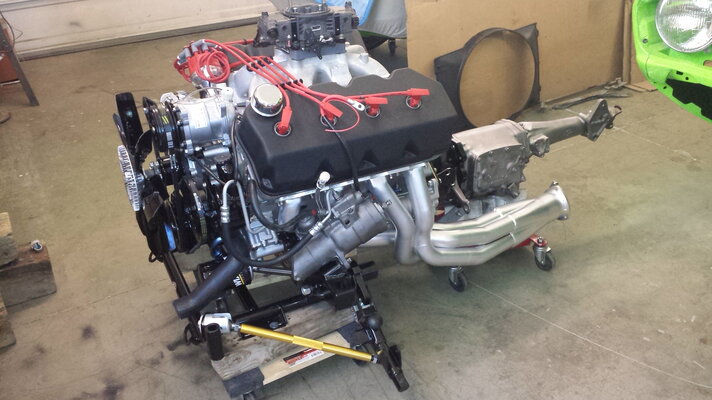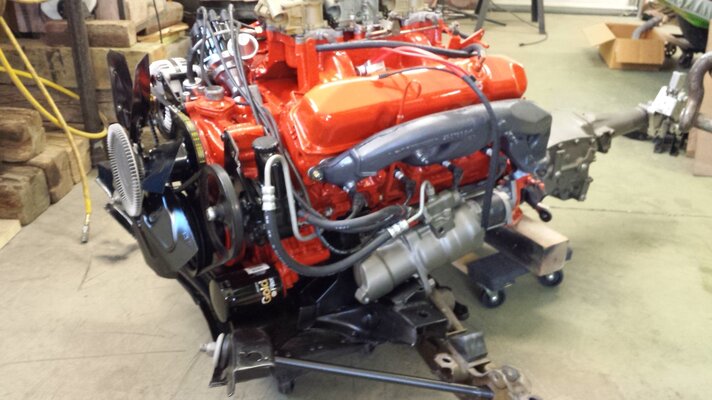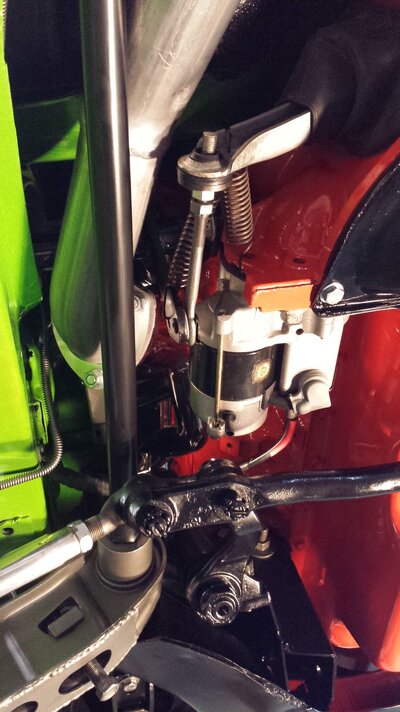High-Torque Starters
By
Jim O'Clair from November 2005 issue of
Muscle Machines
Category:
Muscle Cars
The conventional positive-engagement starter in your performance machine or street car probably does a pretty good job for the most part. These wound-armature and wound-field starters have been around since the end of the hand-crank era. But, as with just about everything in life these days, somebody found a better way to do the same job more efficiently.
Chrysler was the first manufacturer to incorporate some of this new starter technology, in 1962. Anybody standing within a half-mile of a 1960s or newer Mopar can distinguish the whine of a Chrysler gear-reduction starter without much effort. This type of starter worked well for Chrysler because they were lighter than other starter and solenoid combinations of the day (remember that 16 pounds in 1962 was considered light for a starter) and one starter worked for any engine size application, six- or eight-cylinder, big-block or small-block. Additionally, the gear-reduction system inside the unit made for a more reliable starter drive engagement and fewer "spin-outs" than with a conventional starter. But gear-reduction was only the first step towards the high-torque starters of today. Starter manufacturers, such as Bosch, Mitsubishi and Nippon-Denso, began using gear-reduction starters as early as 1971 for applications such as the Mazda rotary engines or the smaller imported diesel engines, like in the Chevy Luv pickups, Isuzu I-Mark and the Ford Escort diesels. It wasn't until the late 1970s that gas-powered imported cars started using a permanent-magnet, gear-reduction starter (PMGR) as standard equipment.
PMGR starters have no field coils like positive-engagement starters do. This means that power is sent directly to the starter armature through the brushes and commutator, meaning less battery power is wasted energizing the field coils and that less heat is generated by the starter as well. The first gas engines using a PMGR starter were the 1977 Datsun 810 and Honda Civics. Ultimately, American manufacturers started using the PMGR starters in the 1980s (actually with Harley-Davidson becoming the first American builder to use them as standard equipment for their entire product line in 1983). In cars, GM began using a Delco-designed PMGR starter in 1988 Corvettes and Cadillac Allantes. Ford soon followed with their own Motorcraft permanent-magnet version in the 1989 Lincolns. Chrysler opted to use a Mitsubishi or Nippon-Denso-built unit, depending on application. Also Mercruiser, Cobra, Volvo and Yamaha inboard marine manufacturers adopted the PMGR starters as their choice for an original equipment unit about the same time.
The principle behind a PMGR starter is the same principle you could apply at a drag strip if you matched a Honda Civic against a Chevy Nova. The Honda would beat the Nova off the line for the first 50-100 feet, because it has less mass to carry and the engine is reaching its maximum performance faster than the Nova. This means the Honda will reach that "magic" 5,252 rpm when torque and horsepower intersect before the Nova will. The Honda would not be able to make much more of a horsepower gain beyond that point and torque would decrease. When the Nova gets to its peak torque and horsepower the race would be much closer approaching the end of the course (and we assume the Nova would win, based on horsepower). But a starter like the Honda in those first 100 feet would not have to operate longer than a few brief seconds. This means that longer, more sustained power (at a lower torque) is sacrificed in a PMGR starter so that a short burst of high-torque power can be supplied. They could not crank over for as long as a conventional starter, but you really won't need this starter to do that.
When you start shopping for one of these units, the most important thing to remember is torque. Some of the aftermarket starters being sold are rated anywhere from 150-lb.ft. up to 200-lb.ft.
The higher torque starters are specifically designed for 16:1 and higher compression ratios and are not really designed for use in your stock or slightly modified street car. You could end up buying too much torque and spending too much money. Although a 200-lb.ft. starter will work fine in any application, your standard small-block engine will only require 160-lb.ft. if the compression ratio is less than 11:1, or 180-lb-ft. if the compression ratio is higher than 11:1. There seems to be a lot of marketing of PMGR starters by kilowatt ratings. Most are advertised between 1.4kw to 2.0kw, but don't be deceived by the kilowatt rating. Two starters sitting side by side and advertising 1.7kw can have different torque specifications.
The numbers: Manufacturers use this formula to calculate their kilowatt ratings: Kilowatts = (Torque in Newton meters x RPM) ÷ 9,550 Or: Torque in Newton meters = (Kilowatts x 9,550) ÷ RPM Torque can be converted from Newton meters to pound-feet by this equation: Newton meters = Pound-feet x 1.36 Or: Pound-feet = Newton meters ÷ 1.36 Or: Newton meters x 0.7375 = Pound-feet
Torque ratings Because different small motors (like engines) have different RPM ratings, there can be a wide range of 1.7kw starters that produce different amounts of torque. Torque can also be expressed as "the ability of your engine to overcome any forces that hinder rotation." This means that the addition of higher compression ratio pistons, superchargers, new piston rings or even a serpentine belt conversion can make it necessary to use a higher torque starter than your stock engine would normally need.
So buy a starter based on torque rating and engine requirements, not by kilowatt rating.
There are other advantages for using a permanent-magnet starter besides more torque.
PMGR starters are smaller in diameter and allow better clearance in tight mounting situations. They are also offset in design so they are slightly further away from the heat source (i.e. your engine), which can add to the starters' durability as well. They are much lighter than that 15- to 20-pound starter you are pulling out. It's a little bit easier to hold an 8- to 10-pound starter up in the air with one hand while you are lying on your back trying to line up the mounting bolts (also less of a tug on your battery and solenoid wires if it slips out of your hand).
A lighter starter means a lighter (and faster) car for racing applications too. Converting to a PGMR starter can knock 5 to 10 pounds off of your total weight. Usually 100 pounds less weight will gain you about 1/10th of a second in a 1/4-mile.
These starters consume less energy as well. On an average, a permanent-magnet gear-reduction starter will use 50 percent to 60 percent fewer cold-cranking amps to start your engine. This leaves more juice in your battery to operate other equipment and puts less strain on your charging system. The extra starting power virtually eliminates the problem of hot-crank starter failure. Because the technology is fairly recent and rebuilding of these units is just in its infancy, you will find that most aftermarket units offered will be brand new starters and will not require a core trade-in (or second trips to the parts store to return your dirty old unit).
PMGR starters can be adaptable to many engine sizes as well. Some aftermarket GM starters are open-nose, and can work with either small-block or big-block engines. They can also be inverted if necessary for added clearance in applications where an oversized oil pan is being used or where header clearance is a problem. Open-nose starters will function effectively in your daily driver; however, we would recommend that you find one with a closed nose for everyday use applications unless the inverted positioning is needed. The protection of the nose cone will mean less wear and tear on the starter drive, which adds up to extend starter life expectancy.






















